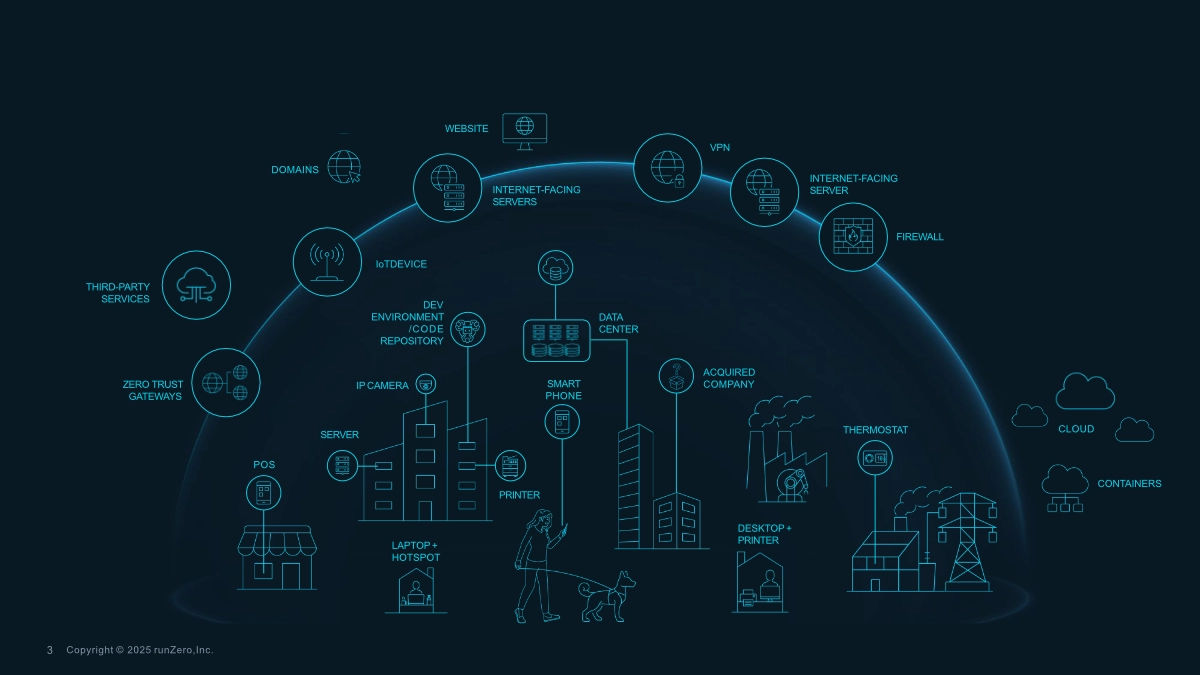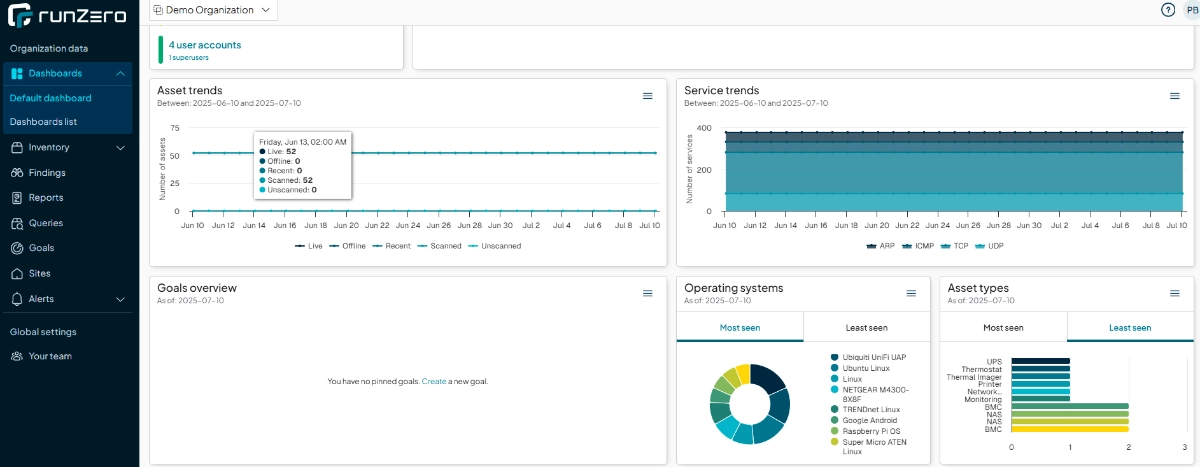Identify IoT and OT devices with runZero
IoT and OT devices are different to manage when you compare this with laptops and servers. How can you identify and protect IoT and OT devices from possible hacking will be addressed in this article

What is IoT and OT?
Why would that be?
Every "thing" is connected. In home-use environments we think about dishwashers and refrigerators. These things exist in business networks too, supplemented with radio's, coffee machines, etc... They need to be connected to inform the supplier for whatever or to receive functional information from the internet in order to work (such as internet radio). This is non production related and is categorized as "shadow IT".
On the other hand, we have OT networks (Operational Technology). These are more specific and quasi always production related assets, meaning that they are required to make the production work. A well-known example would be a PLC, but it could as well be a CT scanner in a hospital. Most of the time we know that it's there, but we forget about the subparts such as suppliers that install a sensor to do remote follow-up.

How is this a threat?
Yeah yeah, not for me!
What does Kappa Data offer?
- API-integration with other EDR solutions and existing vulnerability scanners
- Passive Discovery
- Active Discovery
API-Integration
Endpoint Detection and Response (EDR) is often used on endpoints like workstations, laptops or servers and deliver already discovery of activities on these endpoints. The most common EDR solutions used are Crowdstrike, SentinelOne and Sophos. All these types of solutions are agent-based, so only for a limited number of devices.
The same API-integration can be used to integrate telemetry of other vulberability scanners, but as well Mobile devices of remote users that work remotely by integrating telemetry from Microsoft Intune or others
Passive Discovery
Passive discovery is used by many vulnerability scanners today and listen to network traffic on that moment. This type of discovery allows you to discover the communication between devices during the scan.
But, what if devices are not sending data packages on the moment of the scan?
That’s problem of using only a passive scan. IoT and OT devices don’t data packages over the network when they are not used. In other words, Passive discovery don’t offer a complete visibility of all devices in the network.
Active Scanning
Active Scanning with runZero can be performed in a safe way in any type of network of type of organization. The algorithms of runZero will not only listen to the current network traffic, but will ask questions to every type of device and deliver a complete overview of all attributes and services that are bound to the device.
With active scanning of runZero we experience safe scans in industrial and IT environments, but as well a discovery of more than 25% assets than expected.
Active Scanning with runZero provides you a complete visibility of your attack surface
After identification comes protection?
What if there still is an attack?
Why would you consider IoT and OT protection?
- Assets can be used as a jump host to attach the internal network.
- OT networks are in the heart of your production network. You don’t want this to be attacked.
Frequently asked questions
Check our FAQ section where you can find the first questions that have been asked to us during the last months.
Contact usWhat challenges do organizations face in managing and securing IoT and OT devices?
Organizations face several challenges in managing and securing IoT and OT devices, including:
- Visibility: Difficulty in identifying all devices connected to the network due to the sheer number and variety of devices.
- Diverse protocols: IoT and OT devices often use various protocols that are not standardized.
- Legacy systems: Many OT devices are legacy systems that were not designed with security in mind.
- Limited control: Difficulty in applying traditional security measures to devices that cannot be easily managed or updated.
- Vulnerabilities: Increased risk of vulnerabilities due to lack of regular updates and patches.
What are the benefits of using runZero for a network with many IoT and OT devices?
Using runZero in a network with many IoT (Internet of Things) and OT (Operational Technology) devices offers substantial benefits, especially in environments where visibility, manageability, and security of these devices are challenging. IoT and OT networks often contain unmanaged, legacy, or proprietary devices that are difficult to monitor with traditional IT tools—runZero fills that visibility and security gap.
How does runZero help in identifying IoT and OT devices on a network?
runZero helps organizations identify IoT (Internet of Things) and OT (Operational Technology) devices on a network by using agentless, active scanning and network fingerprinting techniques that uncover assets traditional tools often miss. These capabilities are crucial in environments where IoT/OT devices are common but difficult to manage, such as manufacturing, healthcare, energy, and critical infrastructure.
How can runZero improve security for IoT and OT devices that are difficult to manage?
runZero can significantly improve security for IoT (Internet of Things) and OT (Operational Technology) devices that are often difficult to manage due to limited interfaces, lack of agent support, or outdated firmware.
Contact us for a demo
Are you curious to learn whether our solutions can help you with searching of assets in the network and how to protect these assets? Contact us for a demo via the below button.
